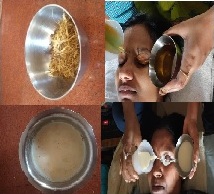An Ayurveda Approach to the Management of Astigmatism: A Case Report
Abstract
Astigmatism is a type of refractive error wherein the refraction varies in the different meridian of eye. This accounts for approximately 13% of all refractive errors. Kriyakalpas are the special treatment protocols mentioned for the management of eye disorders in Ayurveda. This paper aims to highlight the benefits of Kriyakalpas in Myopic Astigmatism with a case study, which includes short discussion on the mode of action of various Kriyakalpas based on its bio availability. The efficacy of the treatment plan is dependent on the method of preparation of drug and mode of administration mentioned in classics. It highlights all the above said points on the basis of clinical observations during the treatment of female subject aged 10 years, diagnosed with myopic astigmatism, which can be correlated with features of Prathamapatalagata Timira. She was treated with Nasya, Aschothana, Seka, Pindi and Tarpana. Her visual acuity and Diopteric powers were evaluated before and after the treatment and in follow-ups. There was significant improvement in both the parameters which highlights the benefits of Kriyakalpas in myopic astigmatism.
Downloads

Copyright (c) 2021 International Journal of Ayurveda and Pharma Research

This work is licensed under a Creative Commons Attribution-NonCommercial-ShareAlike 4.0 International License.






